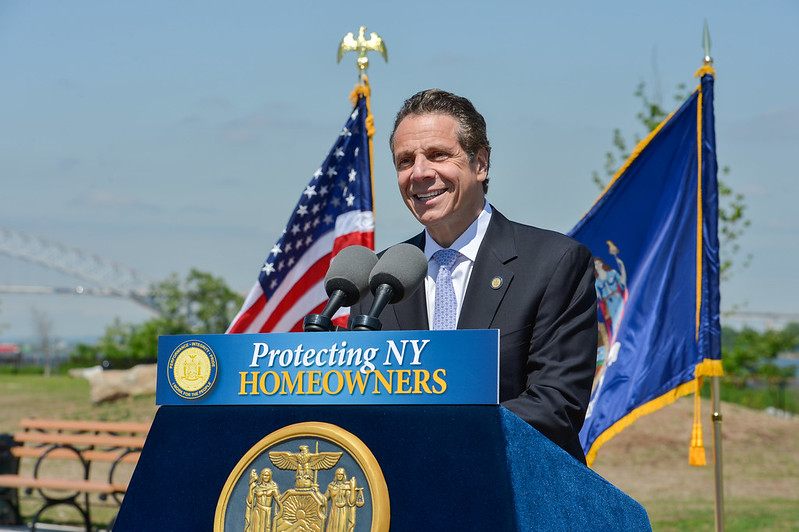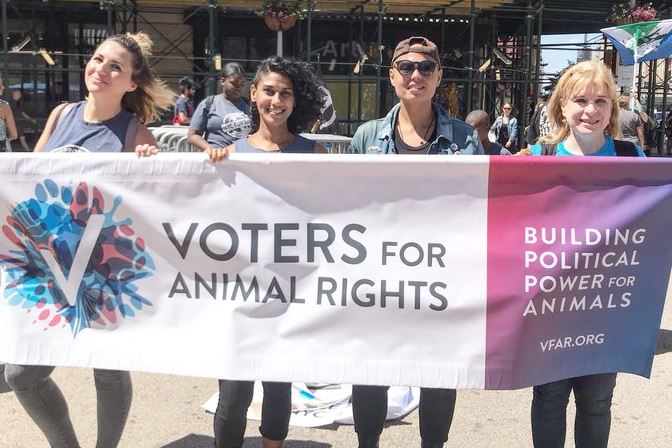Letter to the Editor: Nuclear Is Not The Answer

from Chernobyl (photo: Where Can I Fly?)
To the Editor:
I respectfully but fundamentally disagree with the op-ed column by Leonard Rodberg and Herschel Specter, “Keeping the Lights On, and Saving Billions, While Addressing Climate Change” (Oct. 24, 2019), about keeping open the nuclear reactors in New York state.
The column does not mention the greatest dangers nuclear reactors present: those from nuclear waste. This waste has been accumulating around all the 415 nuclear energy plants of the world for nearly 70 years, and no satisfactory solution has been found to deal with it. It has to be constantly watched; if it gets released in the environment it starts its destructive work.
In Chernobyl it caused large numbers of cancers that manifested themselves many years after the 1989 accident. Recently some waste got away at Fukushima in Japan as a result of a tornado. The amount of radiation in these places was small compared to what is present in the waste stored all over the world. Large amounts (even if released in only one place) would have world-wide catastrophic consequences. And the way things are going, with natural catastrophes increasing in number and power, with genocides, armed struggles, millions of would-be refugees, sudden political changes, and more, the loss of control over nuclear waste at one place or another is almost certain to happen.
The authors say if we don’t keep open the nuclear plants New York will not and cannot fulfill its clean energy plan. This may be true (even with the plants kept open). We have seen similar things before: in Kyoto, Canada undertook to cut its emissions by 6% over the period 1990-2012; instead, it increased them by 24%, then repudiated the Kyoto Protocol in 2011. In 2007 the CUNY college where I taught made a ten-year environmental plan: one item was to use the huge southward sloping roof of the sports building for solar heating panels. Well, 2017 came and went. Big repairs were made on the roof in question, but there are no solar panels on it.
It is hard to do things in a hostile environment. As long as United States national policy does not fundamentally change, most local environmental efforts are likely to fail. With a federal Green New Deal, a concentrated national effort with huge public investments and effective support for renewable energy, the New York plan will succeed.
Some might object that just as New York cannot do it without the national government, the country cannot do it without worldwide cooperation. Quite true. But the only way to get international cooperation is to start with the national Green New Deal. Then the competitors on the world scene, who are now in a mad rush not to stay behind in industrialization and development, can slow down and become open to agreements aimed at saving as much of the planet’s environment as possible.
Sincerely,
Adam Koranyi, former professor (retired) at Lehman College, CUNY
***
Have an op-ed idea or submission for Gotham Gazette? Email This email address is being protected from spambots. You need JavaScript enabled to view it.
How 2020 Can Be the Year of the Homeowner in New York

(photo: the governor's office)
This year New York state government passed historic housing affordability reforms achieved by the pro-tenant Housing Stability and Tenant Protections Act of 2019, but a truly equitable approach to the state’s affordable housing landscape requires opportunities for working families to build equity. Now it is time for Albany to address the long-neglected affordable ownership sector of the housing continuum by passing a similar package of comprehensive legislation aimed at supporting existing affordable homes, as well as the creation of new low-to-moderate-income, first-time homebuyer opportunities.
Affordable rental housing often receives the lion’s share of attention within the framework of New York’s housing crisis, despite the fact that New York City has one of the lowest rates of homeownership in the country and that affordable homeownership creates unique benefits of community and family stability.
However, each segment of affordable housing – affordable ownership, rentals, public housing, etc. – is intertwined in a continuum. For example, a family given the opportunity of affordable homeownership is more likely to leave behind a rent-stabilized or otherwise affordable rental unit, freeing up that unit for another family.
We have seen this firsthand at Habitat for Humanity New York City, as a significant number of our first-time homebuyers have transitioned into homeownership directly from public housing units operated by NYCHA. This cascading effect frees up units along the housing continuum, so that by helping one family, we are actually providing opportunities for more rent-burdened families and by extension, providing a path forward for even those impacted by homelessness.
Conversely, when would-be-homebuyers are unable to find their affordable starter home to purchase, they stay in their rental unit, stagnating the opening up of affordable units to those who may be in more critical housing need. For example, the foreclosure crisis had a cascading effect beginning with fewer new homeowners, increasing rents and spikes in homelessness rates.
New York City’s already low homeownership rate also skews toward white families supporting a systemic racial imbalance in affordable housing availability that has gone from bad to worse, since the financial crisis of 2008. Decades of racist redlining have prevented countless families of color from ever entering the housing market throughout the 20th century and depressed generational wealth and homeownership rates for non-white families. Nationally, the number of black families who own their own homes has dropped to 1960 levels, or 40.6 percent, compared to a white homeownership rate of 73.1 percent – effectively setting the clock back to levels that pre-date the Fair Housing Act.
The reasons for a low homeownership rate in New York City are complicated, but what stands out are the significant barriers to becoming a first-time homebuyer. For most New Yorkers, homeownership is just too far out of reach: A report from StreetEasy earlier this year found that New Yorkers would need to accumulate savings over an average of 18 years – more than 10 times the national average – before they could even afford a median-priced home within the five boroughs. A 2016 study by NYU’s Furman Center further found that home prices rose by more than 200 percent over the last 25 years, meanwhile median household income, adjusted for inflation, fell by 11 percent.
State and local policies have also had a significant impact in shaping the city’s housing continuum. For decades, funding levels for rental housing programs have vastly outpaced homeownership programs, leaving limited resources for home-builders across the state. Municipal processes like the tax-lien sale have disproportionately impacted communities of color and homeownership opportunities keep getting converted to rental housing when sales do occur.
There are several policies state government in Albany could implement in the next session to turn the tide and provide more opportunities for working-class New Yorkers to become or remain homeowners.
1. Increase construction and rehabilitation funding for permanently affordable homeownership.
The Affordable Housing Corporation, the state’s primary source for new homeownership construction funding, has not received a significant increase over the last 30 years. Assembly Member Latrice Walker and Senator Jamaal Bailey have each introduced legislation that increases the per-unit allocation for home-ownership units while also requiring that projects accessing increased funds require permanent affordability restrictions, ensuring long-term public benefit for increased investment.
2. Create a Cooperative Ownership Opportunity Program (COOP).
With many affordable housing buildings entering their regulatory sunset years and at risk of going market-rate, the creation of a Cooperative Ownership Opportunity Program (COOP) could enable non-profit technical and legal service support for tenants interested in purchasing their expiring LIHTC buildings, Mitchell-Lama Article II buildings, mobile-home parks, and other rent-regulated buildings. And unlike previous cooperative conversion programs, these new cooperatives could be established with proper pre-purchase education, community land trusts, and monitoring stewardship, and updated regulatory agreements to ensure long-term success.
3. Establish a Community Land Trust (CLT) tax exemption for permanently affordable housing on CLT land.
CLTs limit the resale price of the homes, helping to maintain affordability for the next generation of land trust residents and protect against the loss of scarce affordable housing when the home is resold. The state should pass legislation that qualifies CLT-owned land as tax exempt under the not-for-profit 420-a tax law and either establish a new exemption for CLT homes and buildings or direct taxing authorities to appropriately assess the homes at a reduced rate in accordance with the resale restrictions.
4. Allocate $25M to the New York State Community Development Financial Institution Fund (CDFI Fund).
The NYS CDFI Fund was established in 2007 to provide competitively-awarded grants and investments to New York’s CDFIs, which in turn provide equitable financial services in neighborhoods not traditionally served by mainstream banks, helping low-income New Yorkers build wealth and establish credit. Some CDFIs also provide low-interest mortgages, cooperative share loans, preservation rehab financing, and energy efficiency lending to low-income cooperatives to help sustain long-term affordability. However, since its historic inception as the first state-based fund of its kind, New York has yet to allocate any funding to the NYS CDFI Fund.
5. Creation of an Affordable Cooperative/Condominium Ombudsman.
Affordable cooperative and condominium housing is an important portion of New York state's affordable residential housing stock. Inevitably, however, disputes that arise between developer sponsors, shareholders and owners, boards of directors and management companies often result in lengthy and costly litigation and divert resources that could be better utilized to maintain and sustain the buildings. By establishing an Affordable Cooperative/Condominium Ombudsman, all parties involved in residential cooperative and condominium ownership and governance would have access to a neutral and informative resource – something desperately needed to ensure the long-term success of this valuable housing stock.
6. Reform the Private Housing Finance Law (PHFL) and Martin Act in relation to HDFCs to strengthen the stewardship and preservation of affordable cooperative homeownership.
The Legislature should amend the PHFL to clarify the permanent affordability of HDFC cooperatives and empower the Attorney General and housing agencies with increased oversight and enforcement powers to root out abuses. This may also include the creation of an amnesty for non-compliant HDFC cooperatives to exit their regulatory status in exchange for financial restitution dedicated to the creation and preservation of affordable homeownership, as well as increased tax forgiveness for distressed HDFC cooperatives that agree to enhanced oversight.
The Legislature should also fix the Martin Act to encourage rental-to-cooperative and -condominium conversions, while protecting all tenants during the process, as well as ensuring that rental conversions result in viable cooperatives and condominiums through the sale of units to bona fide purchasers.
These modest but needed investments in affordable homeownership at the state level will provide countless families the support they need to move from permanent renters to homeowners. It will give more families of color the opportunity to become homeowners and will strengthen historically nonwhite neighborhoods against the negative effects of gentrification.
Critically, a family that is given the opportunity to purchase an affordable home now shares in the benefits uniquely associated with ownership. Homeownership is a tool that helps families build strength, stability, and self-determination and is a foundation for economic mobility. It is time for Albany to work on pro-equitable homeowner legislation and make 2020 the Year of the Homeowner.
***
Matthew Dunbar is Vice President of External Affairs at Habitat for Humanity New York City. On Twitter @misterdunbar & @HabitatNYC
***
Have an op-ed idea or submission for Gotham Gazette? Email This email address is being protected from spambots. You need JavaScript enabled to view it.
A Historic Day for Animals in New York City

(photo: @theanimalvoters)
A landmark package of nearly a dozen animal protection measures is set to pass the New York City Council this week, championed by Speaker Corey Johnson, along with several other members. The strength of our city’s progressive roots grows deeper with the passage of this animal protection package, and it will be a defining moment in our city’s history.
What does it say about a society that allows horses to pull carriages in rush-hour traffic in the blistering summer heat or restaurant menus to offer for sale a product that comes from the diseased liver of a tortured duck force-fed with a foot-long pipe?
On the other hand, what does it say about a City Council speaker and Council members who stand against these blatant cruelties to animals? We believe it says everything about them because, in the end, our true moral test consists of our actions or inaction toward those who are at our mercy.
Among the nearly dozen measures set to pass, four stand out most notably.
A bill sponsored by Council Member Justin Brannan, Intro 1478A, will make New York the first city in the nation to establish an Office of Animal Welfare within the Mayor’s office. A bill sponsored by Council Member Keith Powers, Intro 1425A, will prohibit the abusive horse-carriage industry from working horses on extremely hot and/or humid days.
A bill sponsored by Council Member Carlina Rivera, Intro 1202A, seeks to deter and punish individuals who steal wild birds from our city’s parks. And another bill sponsored by Council Member Rivera, Intro 1378A, would prohibit the sale of force-fed foie gras in New York—the largest foie gras market in the country. The foie gras sales ban bill has more support than any other bill in the package, including a coalition of over 50 not-for-profit organizations led by Voters For Animal Rights, 50 New York-based veterinarians, 30 Council co-sponsors, over 90 New York City-based restaurants, and 81% of New York City voters, according to a Mason Dixon poll.
Foie Gras—French for fatty liver—is a gruesome luxury food product made from the diseased and enlarged liver of a duck produced through force-feeding. Ducks abused by the foie gras industry suffer immensely from ruptured organs, esophagus trauma, broken bones, illnesses, and diseases as a result of having a foot-long metal or plastic pipe shoved down their throats and a large mass of food injected into their delicate digestive system several times a day for weeks. The sole purpose of this barbaric force-feeding is to swell and disease the bird’s liver to ten times its normal size so it can be sold as foie gras.
The force-fed foie gras sales ban legislation exemplifies the historic nature of this animal package moving through the City Council. First, it is one of the most important animal protection bills passed by any city in the country on account of the vast number of animals it will save per year. Second, rarely in politics do you see unpaid grassroots volunteer-run organizations — like those at Voters for Animal Rights — take on and win against multimillion-dollar companies with high-paid lobbyists. Lastly, the sheer brutality behind the production of foie gras provides important context to the plight of farmed animals on industrial farms, such as the ducks on Hudson Valley Foie Gras and La Belle Farms.
These measures send a strong and clear statement to the world that New Yorkers reject the notion that animals are mere property, but rather sentient beings whose capacity for suffering affords them the right to legal protection from cruelty.
This package represents far more than just a few laws that protect horses, ducks, and pigeons from abuse. It is irrefutable evidence of our moral progress as New Yorkers.
Gandhi famously asserted that “the greatness of a nation and its moral progress can be judged by the way its animals are treated.” While we certainly have a long way to go when it comes to protecting animals from abuse, this is a landmark of progress and surely a moment worth celebrating. Speaker Johnson, Council members, your leadership on this issue is commendable and well-deserving of praise.
***
by Allie Feldman Taylor & Matthew Dominguez, Voters for Animal Rights. On Twitter @AllieFeldman212 & @Matt_Dominguez & @theanimalvoters. And co-signed by coalition partners:
Humane Society Veterinarian Medical Association
Animal Legal Defense Fund
World Animal Protection
Physicians Committee for Responsible Medicine
Compassion in World Farming
Farm Sanctuary
Barn Sanctuary
Woodstock Sanctuary
Four Paws
Animal Protection Rescue League
Animal Defenders International
In Defense of Animals
Last Chance for Animals
Compassion Over Killing
Lady FreethinkerTheir Turn
***
Have an op-ed idea or submission for Gotham Gazette? Email This email address is being protected from spambots. You need JavaScript enabled to view it.




